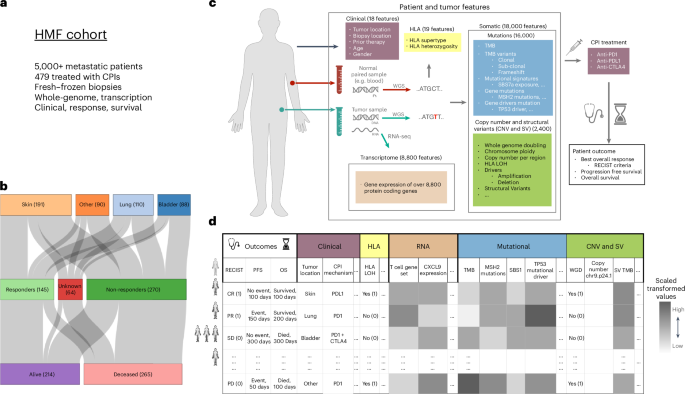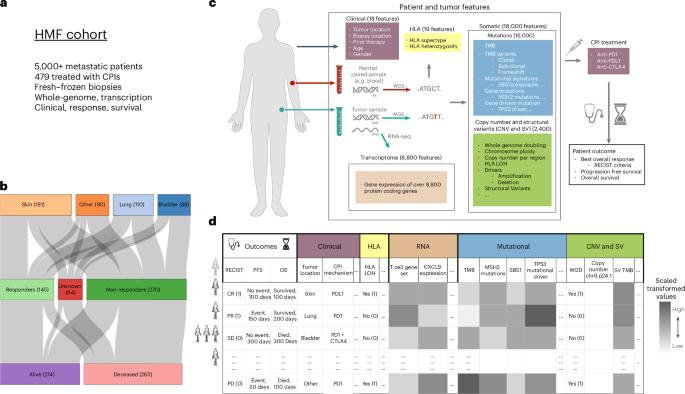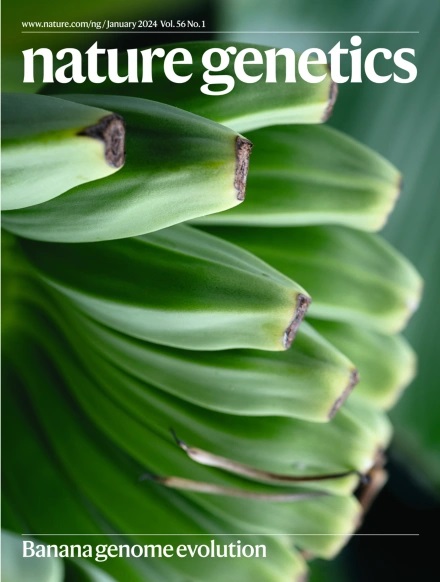免疫疗法反应的五个潜在因素
IF 31.7
1区 生物学
Q1 GENETICS & HEREDITY
引用次数: 0
摘要
只有一部分接受免疫检查点抑制剂(CPIs)治疗的患者会对治疗产生反应,而如何区分有反应者和无反应者是一项重大挑战。许多拟议的 CPI 反应和生存生物标志物可能代表了对肿瘤、肿瘤微环境或宿主相同方面的替代测量。因此,我们目前忽略了有多少真正独立的生物标志物。通过对一组转移性肿瘤患者(n = 479)的基因组学、转录组学和临床数据进行无偏见分析,我们发现了五个正交的潜在因素:肿瘤突变负荷、T 细胞有效浸润、微环境中的转化生长因子-beta 活性、既往治疗和肿瘤增殖潜力。它们与 CPI 反应和生存的关系在所有肿瘤类型中均可观察到,并在六个独立队列(n = 1,491)中得到验证。这五个潜在因素构成了一个参考框架,用于组织当前和未来有关 CPI 反应和生存的生物标志物的知识。本文章由计算机程序翻译,如有差异,请以英文原文为准。


Five latent factors underlie response to immunotherapy
Only a subset of patients treated with immune checkpoint inhibitors (CPIs) respond to the treatment, and distinguishing responders from non-responders is a major challenge. Many proposed biomarkers of CPI response and survival probably represent alternative measurements of the same aspects of the tumor, its microenvironment or the host. Thus, we currently ignore how many truly independent biomarkers there are. With an unbiased analysis of genomics, transcriptomics and clinical data of a cohort of patients with metastatic tumors (n = 479), we discovered five orthogonal latent factors: tumor mutation burden, T cell effective infiltration, transforming growth factor-beta activity in the microenvironment, prior treatment and tumor proliferative potential. Their association with CPI response and survival was observed across all tumor types and validated across six independent cohorts (n = 1,491). These five latent factors constitute a frame of reference to organize current and future knowledge on biomarkers of CPI response and survival. Analysis of human tumor datasets shows that all features that appear significantly associated with immunotherapy response and survival may be collapsed into five latent factors: tumor mutation burden, T cell effective infiltration, TGF-β activity in the microenvironment, prior treatment and tumor proliferative potential.
求助全文
通过发布文献求助,成功后即可免费获取论文全文。
去求助
来源期刊

Nature genetics
生物-遗传学
CiteScore
43.00
自引率
2.60%
发文量
241
审稿时长
3 months
期刊介绍:
Nature Genetics publishes the very highest quality research in genetics. It encompasses genetic and functional genomic studies on human and plant traits and on other model organisms. Current emphasis is on the genetic basis for common and complex diseases and on the functional mechanism, architecture and evolution of gene networks, studied by experimental perturbation.
Integrative genetic topics comprise, but are not limited to:
-Genes in the pathology of human disease
-Molecular analysis of simple and complex genetic traits
-Cancer genetics
-Agricultural genomics
-Developmental genetics
-Regulatory variation in gene expression
-Strategies and technologies for extracting function from genomic data
-Pharmacological genomics
-Genome evolution
 求助内容:
求助内容: 应助结果提醒方式:
应助结果提醒方式:


